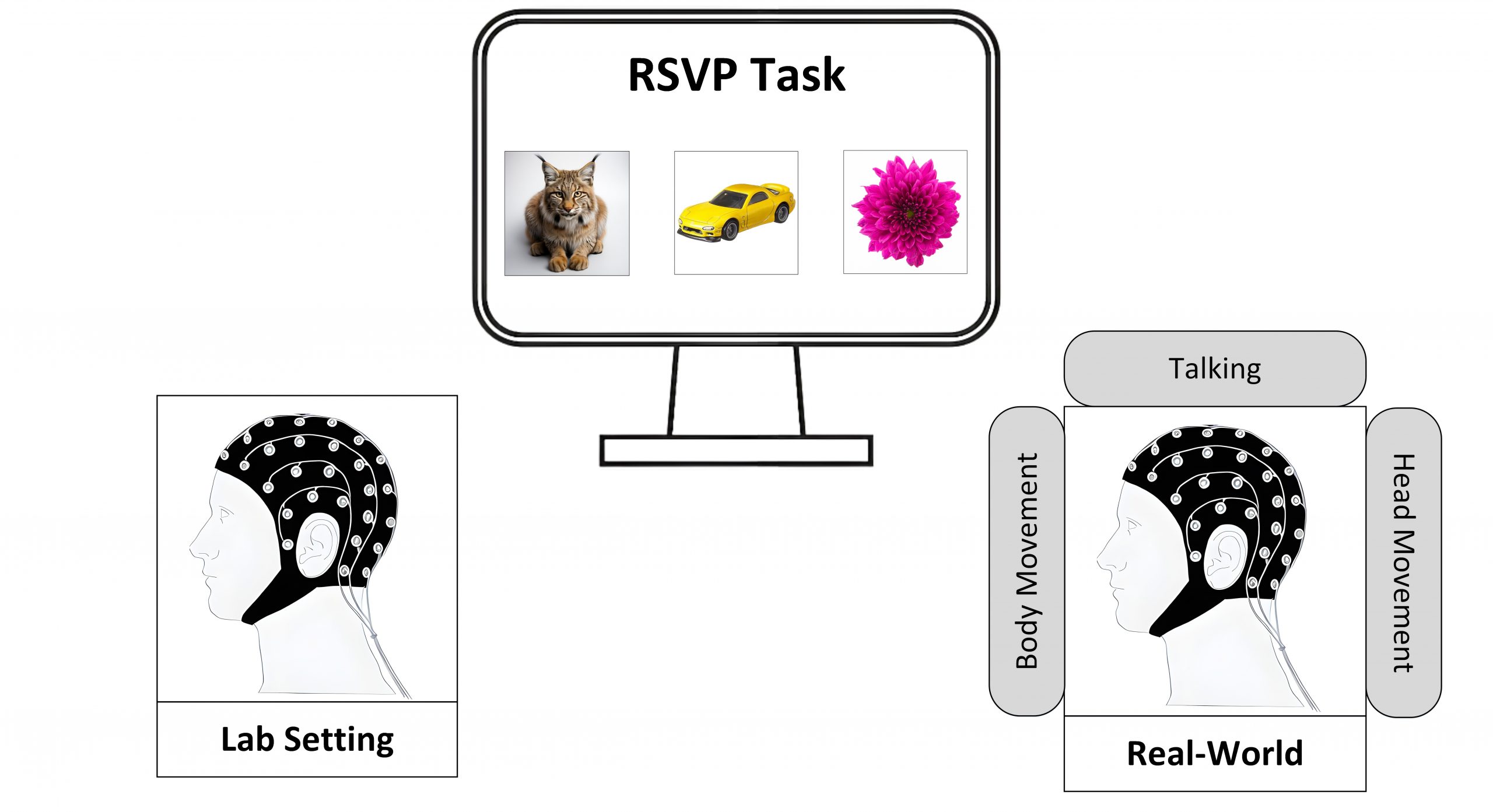
AMBER: advancing multimodal brain-computer interfaces for enhanced robustness
Ahsan Awais, Insight Postgraduate PhD student, discusses the potential impact of his paper recently published by Frontiers.
Electroencephalography (EEG) is the conventional method of monitoring the electrical activities of the brain by placing special sensors called electrodes on the surface of the scalp. Electrical signals are generated by the inter-communication of cells within the brain.
The brain–computer interface (BCI) has been one of the most rapidly growing technologies in recent years. It provides a control system that is capable of transforming a user’s intentions into special commands to be used as a communication bridge between the brain and the outside world.
Traditionally, EEG-based BCI studies are performed in a controlled environment where participants engage in various tasks while wearing EEG caps to record brain data. However, there is a significant research gap that needs filling to take EEG outside of the lab, meaning it could be used in naturalistic/real world environments.
In light of this gap, we aim to create a valuable resource for researchers. Since no suitable dataset currently exists, we aspire to provide a dataset that allows scientists to train and evaluate how different brain signals are translated into commands. This involves using non-invasive EEG-BCIs in a naturalistic setting, such as in everyday situations. The goal is to advance our understanding of how artifacts (noise), like movements or eye movements, affect EEG data in real-world settings.
The Rapid Serial Visual Presentation (RSVP) is an experimental approach to BCI in which a series of images are displayed at high speed. Participants are asked to differentiate between a set of target images (for example cars) and a set of standard images (for example flowers, buildings, animals etc). When they see a target image, a brain response called P300 is triggered, but this doesn’t happen with standard images. The P300 wave (spike in activity) is an event-related potential (ERP) component elicited in the process of decision-making.
By utilizing the P300/RSVP task in this dataset, we aim to differentiate the EEG results obtained in the presence of noise from those obtained in noise-free conditions. This differentiation allows for a comprehensive analysis of the impact of noise on EEG signals and facilitates the evaluation of signal-denoising techniques. The P300/RSVP task is particularly relevant as it involves measuring accuracy, making it an effective dependent variable to assess the efficacy of noise cleaning and evaluate the influence of behavioral artifacts on the EEG signals. Furthermore, we can gain insights into the relationship between noise, behavioral artifacts, and the quality of EEG signals, ultimately enhancing our understanding of the robustness of EEG data in real-world settings.
To create this dataset, participants were instructed to produce particular artifacts at particular times via a carefully controlled protocol, e.g., moving head left to right vs. up and down, body movement and talking etc. The specific artifacts that participants were instructed to produce during data recording reflect the most problematic artifacts encountered in real-world EEG recording.
Alongside capturing EEG signals, we concurrently recorded video data. This simultaneous collection of EEG and video data is vital for enhancing signal denoising techniques and optimizing Brain-Computer Interface (BCI) performance, particularly in real-world scenarios.
A comprehensive dataset (AMBER) has been made available from this research to facilitate further exploration by researchers.
This initiative opens new horizons for the exploration of brain-computer interfaces and EEG signal analysis, equipping researchers with a rich resource to develop and validate novel methodologies, ultimately advancing the field of neuroscience and human-computer interaction.
You can read the full paper published by Frontiers
Corresponding Author: Muhammad Ahsan Awais, Co Authors: Peter Redmond, Tomas Ward and Graham Healy